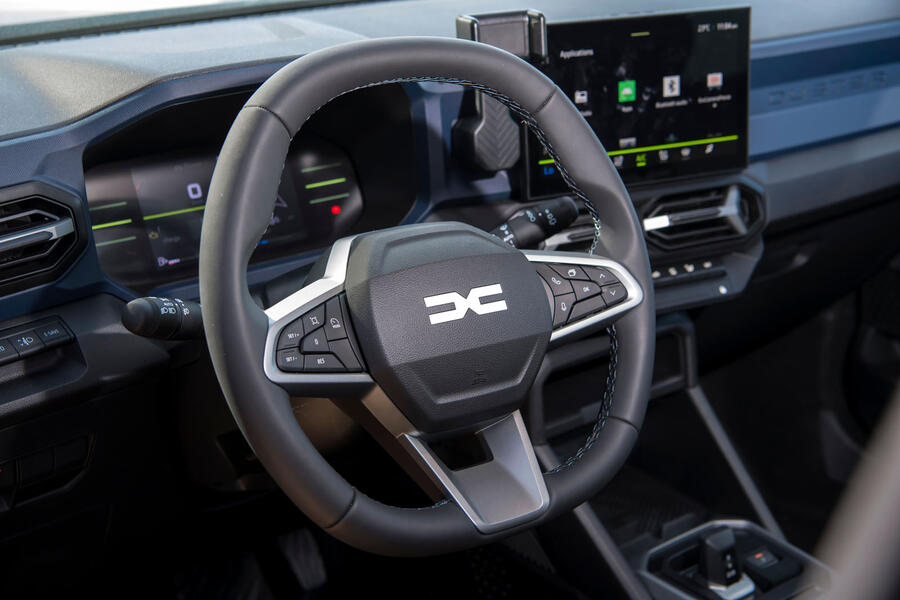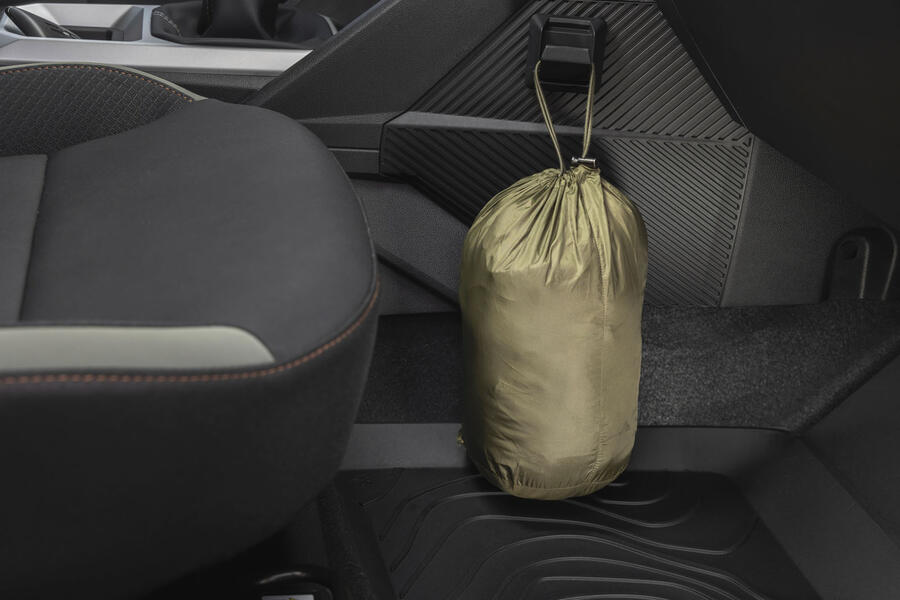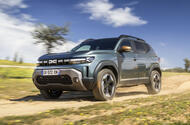The new Dacia Duster will arrive in November from £18,745, meaning it keeps its status as one of the UK’s cheapest SUVs and “best bargain on the marketâ€.
That price secures the 99bhp four-cylinder Bi-Fuel (petrol/LPG) engine – its only non-electrified powertrain – in base level Expression trim. With both brimmed, the Duster can do around 800 miles without stopping for fuel, according to official tests.
The outgoing car’s entry-level 88bhp three-cylinder turbo petrol, which started from £17,970, has been dropped, along with diesel offerings. “It’s dying in Europe; clients don’t want this any more,†said engineering executive Julien Ferry.
In its place, the Duster offers for the first time hybrid powertrains which it’s able to accommodate thanks to its move onto the CMF-B platform (as used by the Nissan Juke). Gone is the B0 platform that has underpinned every Duster since the 2009 original.
The move is said to significantly benefit practicality, refinement and dynamics without compromising the Duster’s compact size.Â
Two electrified powertrains are offered: the mild-hybrid set-up, priced from £21,245, comprises a 1.2-litre turbo petrol triple, a 48V electric motor and a 0.9kWh battery. This is the only one available with a four-wheel drive system (from £23,445), which functions similarly to the old Duster’s.
In Auto mode, selected using a simple rotary dial, it is front-wheel drive most of the time but diverts power to the rear axle when the front loses traction. The 4x4 Lock mode, meanwhile, has been replaced with an Off-Road setting that actively distributes the torque between the front and rear axles.

The Duster also gains hill descent control, which can be activated in all gears and limits speed to a maximum of 18mph.
The 4x4 has 8mm more ground clearance (217mm in total) than front-wheel-drive models, while Dacia claims approach and departure angles of 31deg and 36deg.
Headlining the new third-generation Duster range is the Hybrid 140, priced from £24,245. It pairs a naturally aspirated 1.6-litre petrol engine with two electric motors – as also available in the Dacia Jogger – for a combined output of 138bhp. Its 1.2kWh battery is topped up by regenerative braking and is said to allow 80% of city driving to be completed on electricity alone.
As well as a technological overhaul, the new Duster brings the most significant styling change since the Mk1 was introduced. It’s essentially a smaller version of the 2021 Bigster concept, transposing the SUV’s wide haunches and Y-shaped lighting signatures onto a much smaller silhouette.
These cues will be shared with the production version of the Bigster, due in 2025.
The Duster’s underbody, wheel-arch and bumper claddings are made from a material called Starkle, a hardwearing plastic composed of up to 20% recycled material. It’s unpainted, revealing its black and white finish.Â
Dacia claims that around 20% of the plastics in the new Duster are recycled – an 8% improvement on the old one.

The new Duster is 4.34m long, exactly the same as before, but sits marginally lower, at 1.66m tall, and slightly wider, at 1.81m.
The hard-edged design language continues into the Duster’s durability-focused interior, with a colour-contrasting dashboard panel and a chunky steering wheel featuring physical buttons.
The car’s software can be updated over the air, meaning it doesn’t have to be taken to a dealer to download bug fixes and new functions.
Boot space has increased from 445 litres to 472 litres. That’s more than in the rival Ford Puma (456 litres) and Skoda Kamiq (400 litres), although this is largely down to the Duster’s increased size, rather than trick packaging.

With the Duster, Dacia is launching a new accessory system called Youclip.
It comprises a series of square-shaped mounts positioned throughout the car that are each capable of withstanding around 8kg of force.
Compatible accessories include a tablet stand, a cupholder, a bag hook, an induction-charging phone holder and a portable torch.
They will be sold initially through Dacia dealers, but the brand expects owners to quickly begin 3D-printing their own kit.Â




